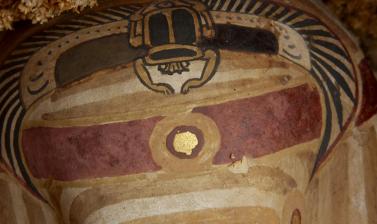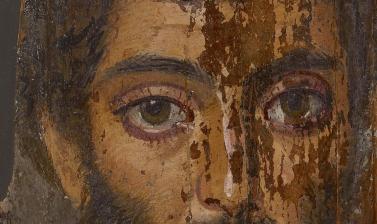EGYPT MEETS GREECE AND ROME
The final room in the sequence of the Egyptian galleries charts the history of Egypt after the death of Alexander the Great in 305 BC and the division of his empire.
Egypt fell to his general Ptolemy who declared himself king and the first leader of the Ptolemaic Dynasty which lasted until the suicide of Cleopatra in 30 BC when Egypt formally became a Roman province.
Articles on display in this gallery show the change in funerary practices during this period. In Hellenistic Greece and Rome there was no shared belief in an afterlife, and it was therefore important to attract lasting recognition of an individual’s lifetime achievements. Some wealthy Greeks and Romans were remembered with portrait statues like those displayed in the wall niches. In Ptolemaic Greek and Roman Egypt painted portraits were combined with strict observance of Egyptian ritual to ensure an afterlife. Some mummified corpses had their faces covered with painted wooden panels which portrayed the dead as subjects of the Greek-speaking provinces of the Roman Empire.











